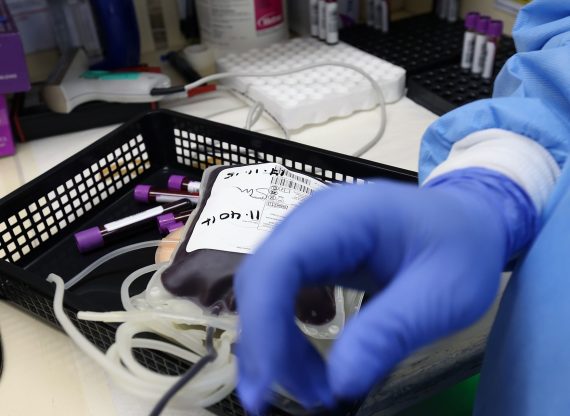Banning blood buys is bad business

Recently, Canadian Blood Services (CBS) made the news for allowing the donation of blood plasma from gay, bisexual, and other men who have sex with men (gbMSM) in two cities. While broadening eligibility redresses an exclusionary policy, it does little to increase the supply of plasma available for Canadians who need it. Given that a plasma shortage is looming, we need to reconsider the voluntary model and look at an option that has a greater potential of increasing the supply: the compensatory model.
Expanding eligibility will do little to increase supply
This marks the first time the agency, funded primarily by provincial and territorial governments, is opening donations to this demographic. Its policy has been under fire for years as homophobic, and this change comes at a time when the demand for plasma is growing rapidly worldwide.
Yet the gbMSM population only accounts for approximately two to three percent of the Canadian adult male population, and only about four percent of Canadians donate blood. Even if fully 50 percent of the gbMSM demographic donated, this would still only net a potential new donor pool of around 10,000 new donors. As we required 23,000 new donors in July to replenish depleted inventory, even this inflated number falls short. In addition, studies show that women are more inclined to voluntarily donate than men, so the number of voluntary donors this change will net is likely far lower.
Evidence shows that an efficient way of increasing the supply of plasma is to pay donors. Look at the United States, for example. Not only does this compensatory model of plasma procurement insulate the country from potential shortages, but the U.S. is actually a significant exporter of plasma and plasma products. In fact, plasma obtained from pay-for-plasma countries—the U.S., Austria, Hungary, Germany, and the Czech Republic—makes up 89 percent of the global plasma supply.
Does Canada allow payment for plasma?
The economics of a compensatory model are clear: supply is low and demand is high, so appropriate incentives are needed to encourage donations. Altruism just isn’t cutting it. There are a couple of provinces—Saskatchewan and New Brunswick—that understand this and allow pay-for-plasma, and several locations are expected to open in Alberta later this fall.
However, despite the federal government agreeing that to meet Canadian demand for plasma products paid donors are needed, British Columbia, Ontario, and Quebec have banned the practice. This means some 75 percent of Canadians are banned from being compensated for their plasma donations.
As it stands, Canadian Blood Services (the national supplier of blood and plasma everywhere outside of Quebec) decided against paying Canadian companies that pay Canadian donors, as they believe that under the right conditions more Canadians will donate within our voluntary, unpaid system. This stance is not a moral stance against paid donations, just paid donations from Canadians!
In fact, CBS does indeed pay for plasma, most often from the United States—even when the Canadian company Canadian Plasma Resources offered a price approximately 20 percent lower than what was being paid to the US. This position stands in the way of a competitive marketplace unfolding, as most of the plasma products that are distributed across Canada come from US donor-paid plasma. In fact, in 2015 we imported over 83 percent of the plasma required to meet the needs of Canadians from the US.
The current scheme makes no sense
In sum, we ban compensation for plasma donations in a number of provinces, and those provinces that do permit the practice see companies selling to other countries rather than using those plasma and plasma products domestically. On the flip side, we import the plasma we need from paid donors in the U.S., even though CBS is legally permitted to purchase from companies in Canada. It just makes no sense.
What justification could there be? It can’t be safety—compensated donations are tested and regulated in the same manner as voluntary donations, and CBS has also recognized that paid donations are just as safe and effective as unpaid donations. Maybe the fear is that this model could crowd out voluntary donation, but evidence from Saskatchewan shows this isn’t the case, so that can’t be it either.
It has been urged by ethicists and economists, including two Nobel Prize winners, that bans on paying for plasma be rethought, as both the ethical and economic arguments against a compensatory model are weak. The very real possibility of a plasma shortage is not something to be ignored, and while redressing the exclusionary policy related to gbMSM donations is beneficial on both ethical and practical grounds, it only opens up a small new pool of potential donors. We need to critically evaluate and rethink Canada’s framework for blood and plasma donations if we want to have any hope of sustainability.
Krystle Wittevrongel est analyste en politiques publiques à l’IEDM. Elle signe ce texte à titre personnel.

